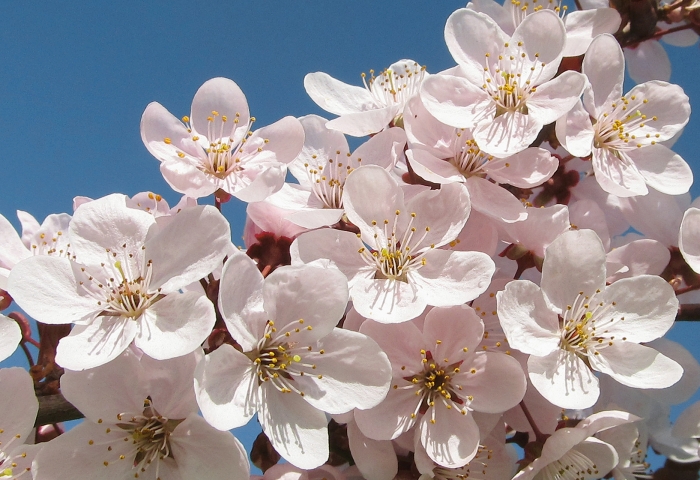Cherry Plum
(Prunus cerasifera)
Cherry Plum (Prunus cerasifera)
/
/

Tsyganov Sergey
CC BY-SA 4.0















































































Estimated Native Range
Summary
This species is valued for its early blooms and can be used in urban planting, as a border tree, or for ornamental purposes in gardens and landscapes. It is also utilized as a rootstock for grafting other Prunus cultivars. Cherry Plum thrives in full sun to part shade, prefers medium water, and grows best in soils with medium drainage. While it is self-fertile, cross-pollination with other Prunus varieties can increase fruit production. Gardeners should be aware of its potential to sucker and spread, which can be managed with regular maintenance. Prunus cerasifera can be invasive in certain regions, such as California, so it is important to consult local guidelines before planting.CC BY-SA 4.0
Plant Description
- Plant Type: Tree
- Height: 15-30 feet
- Width: 15-25 feet
- Growth Rate: Moderate
- Flower Color: Pink, White
- Flowering Season: Spring
- Leaf Retention: Deciduous
Growth Requirements
- Sun: Full Sun, Part Shade
- Water: Medium
- Drainage: Medium
Common Uses
Bee Garden, Bird Garden, Border Plant, Butterfly Garden, Drought Tolerant, Edible*Disclaimer: Easyscape's listed plant edibility is for informational use. Always verify the safety and proper identification of any plant before consumption., Fire Resistant, Fragrant, Hedges, Rabbit Resistant, Salt Tolerant, Showy Flowers, Street Planting
Natural Habitat
Open woodlands, forest edges, and riparian zones across Europe, the Middle East, Central Asia, and West Asia
Other Names
Common Names: Myrobalan Plum, Myrobalan, Ciruela Chabacana, Sand Plum, Kersiepruim, Mirabel, Kirschpflaume, Kirschpflaumenbaum, Türkische Pflaume, Myrobalane
Scientific Names: , Prunus cerasifera, Prunus pissardii, Prunus divaricata, Prunus cerasifera var. pissardii, Prunus cerasifera var. divaricata, Prunus myrobalana, Prunus sogdiana, Prunus cerasifera subsp. divaricata, Armeniaca sogdiana
GBIF Accepted Name: Prunus cerasifera Ehrh.